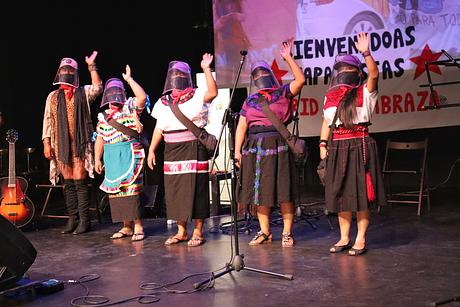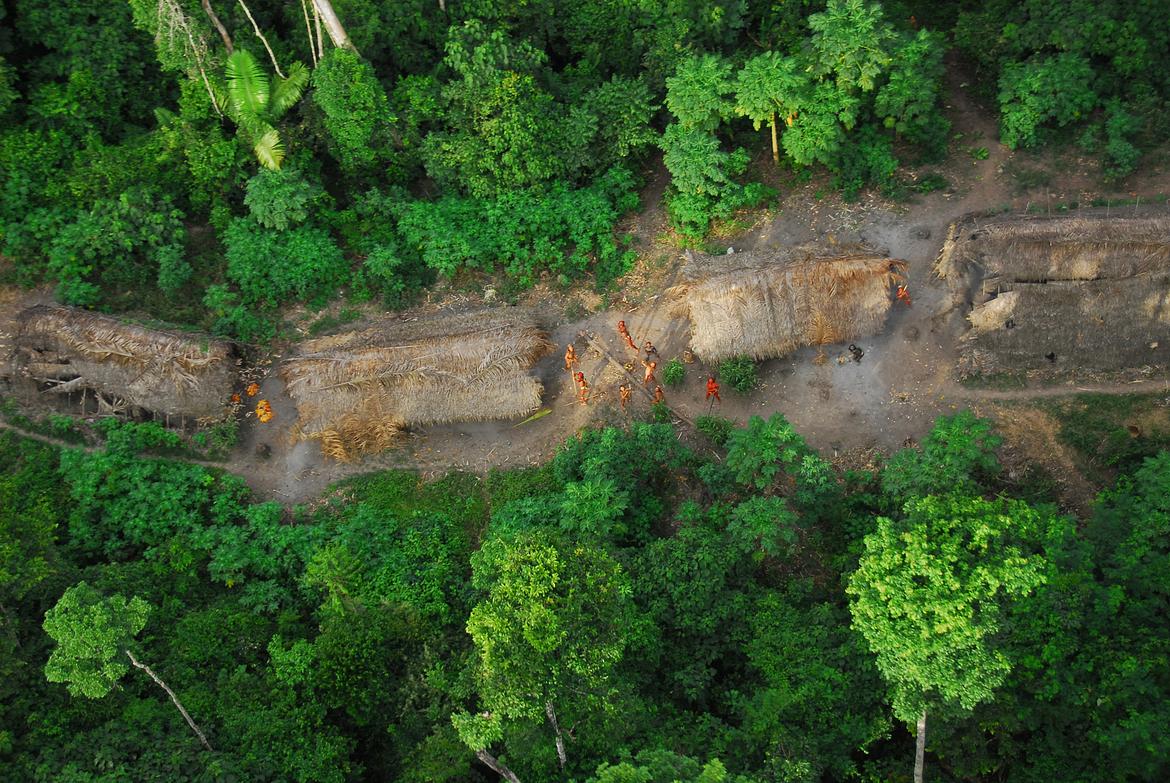500 years later: Contemporary conquistadores and modern-day Mayflowers

By Marial Quezada (formerly Survival International, US) & Sara Mediavilla (Survival International, España)
The conquista has not ended, not even 200 years ago, when we became independent (from Spain). On the contrary, we are still located and practiced in the conquista…in coloniality. It is not the past, it is the present. The past, is a constructed history. — Itaxavi Mendoza (Ñuu Savi, Mexico)
August 13th marks 500 years since Hernan Cortés and his men, seeking gold and economic power, violently invaded and overthrew Tenochtitlan, the heart of the Aztec empire, in what is present day Mexico. Many refer to it as the “conquista” or “fall” of Tenochtitlan, but in fact, this wasn’t the end of conquest, it was the beginning of colonization and the genocide of Indigenous Peoples. Indigenous Peoples across the world are still here and still fighting to defend their lands and lives against invaders.
“The invasion resulted in very few of us to speaking our mother tongue and very few continuing the ancient ceremonial ways, because through pain, terror, slavery, rape, submission and terrible actions they wanted to erase us, they wanted to disappear our lineage. But our strength of spirit is greater, and we continue to exist.” — Xóchitl (Chichimeca/Zapoteca, México)
In light of the 500th anniversary of the fall of Tenochtitlan, Indigenous Zapatista activists travelled a long 47 days by boat from Mexico to Spain for a “reverse conquista”. Since leading an uprising in the Mexican state of Chiapas in the 90’s, the Zapatista Army of National Liberation (EZLN) has struggled for autonomy and been at the forefront of the Indigenous rights movement in Mexico. This year in Europe, rather than demanding the repatriation of the gold-encrusted churches, they have peacefully “invaded” to promote dialogue and assert their resistance to the ongoing threats of colonization and global capitalism to Indigenous Peoples.
“They didn’t conquer us. We are still here, resisting and rebelling”. — Subcomandante Moises (EZLN/Zapatistas, Mexico)
This past year also marked 400 years since the landing of the Mayflower on Wampanoag land in what is now the United States. For many Indigenous Peoples, the Mayflower history represents a genocide that killed up to 90% of the Indigenous population, followed by policies that lead to stolen and lost language, land, and generations of children. This genocide and discrimination still ripple throughout the continent, visible in the extremely high rates of poverty, disease, domestic abuse, police brutality, imprisonment, suicide, and the low life-expectancy of Indigenous people in North America compared to the descendants of immigrants. These tragedies are criminal and stem from the racism perpetrated by the settler colonial society.
“It’s virtually a miracle we are still here. We are the descendants of a People who survived attempted genocide- the loss of our Ancestors’ lives, the erasure of our spirituality, culture, lands, and natural resources, all to a distorted perception of western superiority and a self-declared divine right to dominate other people. We are painfully aware that history cannot be allowed to repeat itself”. — Chairwoman Cheryl Andrews-Maltais (Aquinnah Wampanoag, United States)
The recent identification of mass graves of Indigenous children in Canada and the US has exposed the legacy of colonization, genocide and devastating impacts of schools that aimed to strip children of their indigenous identity, indoctrinate them to conform to the dominant society and thereby ease the theft of their peoples’ lands. And still, across the globe, around two million Indigenous children attend Factory Schools — which have similar aims: erasing Indigenous ways of life and enabling the taking of their lands and resources.
“From the invention of agriculture to the doctrine of discovery, to the genocide of whole continents, and to the era of Indian Boarding schools, we have survived it all. We as Indigenous people are still here”. — Jaque Fragua (Jemez Pueblo, United States)
Modern-day Mayflowers and contemporary conquistadores have many faces- the conservation industry, factory schools, land grabbing, logging, mining. Today, whole populations of uncontacted tribes are being decimated by genocidal violence from outsiders who steal their land and resources, and bring diseases to which they have no resistance. There are unfortunately many examples:
- In Paraguay, the uncontacted Ayoreo live on the run, escaping the cattle ranchers’ bulldozers that are destroying their land
- In Brazil, President Bolsonaro has waged war against Indigenous Peoples. If his government succeeds in eliminating Land Protection Orders that protect Indigenous lands from loggers, miners and other invaders, whole peoples could be wiped out.
- In Peru, unless their lands are legally recognized and protected, uncontacted tribes will continue to face the constant threat of extractive industries and invaders.
The anniversaries of the Mayflower landing and fall of Tenochtitlan remind us that the violent colonization of Indigenous Peoples is not relegated to the past. We must take action to keep history from repeating itself- for tribes, for nature, for all of humanity.

Originally published August 13, 2021





